CP14: Development and evaluation of long-term (yield) effects in NOcsPS crop rotations and simulation/testing of further options for crop rotation adaptation
Diversifying crop rotations with legumes offers an additional approach to solving or alleviating agronomic problems in systems without synthetic chemical pesticides (DAFA, 2012). Legumes have the potential to minimize crop-specific pathogens, for example, and thus reduce the need for pesticides (Munier-Jolain & Collard, 2006). They also increase the availability of nitrogen through N-fixation.
Legumes are sensitive to self-sequencing, which is why larger cultivation intervals of up to 10 years may be necessary (Bainard et al., 2017). This is in contradiction to increasing the area under legumes and strengthening cropping systems with low pesticide input. There is a particular need for research in the direct comparison of crop rotations with and without legumes, which cover several crop rotation cycles. Furthermore, the possible cropping frequency of legumes, especially in relation to interactions between different legume species and with other crops, has hardly been investigated.
The aim of the subproject is to analyze and simulate possible adaptations in crop rotation by testing alternative fertilizer levels/timing, row spacing, and crop variety selection with a view to increasing productivity and stability, based on the data from the NOcsPS project phase 1 (2019-2024). In addition, the cultivation frequency, timing and interactions of legumes in the rotation, including in mixtures, will be evaluated in a field experiment and possible adaptation strategies for NOcsPS rotations will be designed.
Hypotheses:
- Effects of the individual factors of crop management in NOcsPS crop rotations can be quantified by plant growth models and further adaptations can be evaluated by model simulations.
- The optimized sequence of different legume species and intercropping allow an increase in the frequency of legume cultivation in NOcsPS crop rotations.
Our research consists of three different work programs:
WP1: Modeling of the NOcsPS system trial and evaluation of long-term effects in crop rotations
Evaluation of the crop growth model DSSAT to predict the crop yields of the different crops in the rotation, under the influence of row spacing and different mineral N fertilization rates.
WP2: Integration of legumes in NOcsPS crop rotations
In a three-year field experiment at the Ihinger Hof research site, the cultivation frequency, timing and interactions of legumes (soy, chickpeas, lentils in mixtures) and the effects on subsequent crops over the entire rotation are being investigated. For this purpose, data on leaf area index, biomass, nitrogen concentration (soil/plant) and yield parameters are collected
WP3: Model-based evaluation of possible adaptations of NOcsPS crop rotations
Based on the results from WP1 and WP2, the long-term effects of different management practices and crop rotation fields on the growth, development and yield of the different crops, as well as on water, carbon and nitrogen processes in the soil, will be modeled and evaluated.





